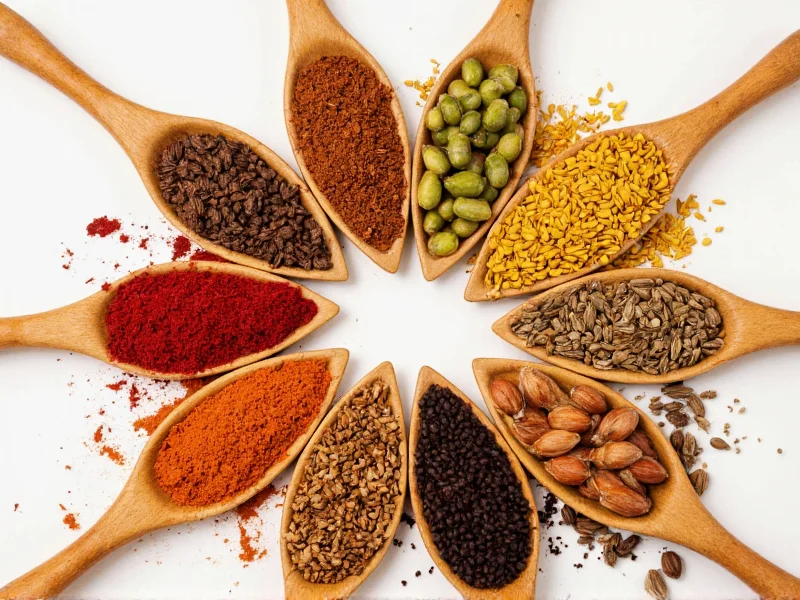The Science Behind Seed Spices
Seed spices contain volatile oils within their cellular structure that remain dormant until activated through heat or grinding. When exposed to dry heat, the Maillard reaction occurs, transforming inert compounds into aromatic molecules. This chemical process explains why toasted cumin seeds develop a warm, nutty character compared to their raw counterparts. The hard outer shell of seeds acts as a natural preservative, locking in flavor compounds that would otherwise degrade in leaf-based herbs. This structural advantage gives seed spices significantly longer shelf life—typically 1-2 years when stored properly versus 6-12 months for most ground spices.
Top Seed Spices and Their Culinary Applications
Understanding each seed's flavor profile and optimal usage transforms ordinary dishes into authentic culinary experiences. These eight seeds represent foundational elements across global spice traditions:
| Seed Variety | Flavor Profile | Best Culinary Applications | Storage Recommendation |
|---|---|---|---|
| Cumin | Earthy, warm, slightly peppery | Curries, chili, roasted vegetables, spice blends | Airtight container, cool dark place (24 months) |
| Mustard | Pungent, sharp, nutty when toasted | Indian tadka, pickling, salad dressings, sauerkraut | Refrigerate after opening (18 months) |
| Fennel | Sweet, licorice-like, anise notes | Italian sausages, braised fish, rye bread, digestive teas | Airtight container away from light (12 months) |
| Coriander | Citrusy, floral, slightly sweet | Middle Eastern dips, Mexican salsas, pickling brines | Cool pantry location (18 months) |
| Sesame | Nutty, rich, buttery when toasted | Asian stir-fries, tahini, bread coatings, sushi rolls | Refrigerate after toasting (6 months) |
Mastering Seed Spice Preparation Techniques
Professional results require precise handling methods that maximize flavor extraction. The dry-toasting technique remains the most effective method for activating seed spices. Heat a heavy skillet over medium-low temperature—never high heat, which burns delicate oils. Add seeds in a single layer and stir constantly for 1-3 minutes until they release aromatic compounds and darken slightly. Cumin seeds crackle audibly when properly toasted, while mustard seeds pop like miniature popcorn. Immediately transfer toasted seeds to a cool plate to stop the cooking process. This prevents residual heat from causing bitterness.
Grinding timing significantly impacts flavor intensity. Whole seeds maintain 80% of their volatile oils for months, while freshly ground versions lose 50% of their aromatic compounds within hours. For dishes requiring ground spices, toast whole seeds first, then grind using a dedicated spice grinder or mortar and pestle. This sequence produces exponentially more flavorful results than using pre-ground alternatives. When substituting whole for ground spices, use a 1.5:1 ratio (1.5 teaspoons whole seeds = 1 teaspoon ground spice) after toasting.
Culinary Traditions Featuring Seed Spices
Regional cooking techniques showcase seed spices in culturally significant ways. Indian cuisine employs tadka, a tempering method where mustard, cumin, and fenugreek seeds sizzle in hot oil to create flavor foundations for dals and curries. Mediterranean cooking incorporates nigella seeds into flatbreads like Turkish simit, where their onion-like notes complement sesame coatings. Ethiopian berbere spice blend relies on fenugreek seeds for its distinctive bitter-sweet complexity, while Mexican adobo sauces use toasted cumin seeds to anchor smoky chili flavors.
Understanding these cultural applications helps home cooks authentically replicate global dishes. For example, adding whole cumin seeds during the initial cooking phase of Indian recipes creates a different flavor dimension than adding ground cumin later in the process. The seeds' gradual oil release throughout cooking produces more nuanced results than single-point seasoning with pre-ground versions.
Nutritional Advantages of Seed Spices
Beyond flavor enhancement, seed spices deliver significant health benefits often overlooked in culinary discussions. Cumin seeds contain thymol, which stimulates digestive enzymes and improves nutrient absorption. Mustard seeds provide selenium and magnesium that support cardiovascular health. Fennel seeds act as natural antispasmodics, easing digestive discomfort. Unlike many processed seasonings, these whole seed spices retain their fiber content and phytochemicals when used in original form.
Research published in the Journal of Agricultural and Food Chemistry demonstrates that toasting certain seeds increases their antioxidant availability by 20-30%. However, excessive heat degrades beneficial compounds, highlighting the importance of proper technique. Incorporating diverse seed spices into daily cooking provides cumulative health benefits without requiring dietary supplementation.
Practical Storage Solutions for Maximum Freshness
Preserving seed spice quality requires understanding their vulnerability to environmental factors. Light exposure degrades volatile oils within weeks, while humidity causes clumping and mold growth. The optimal storage solution combines three elements: opaque airtight containers, cool temperatures (below 70°F/21°C), and minimal air exposure. Glass jars with tight-sealing lids stored in dark pantries outperform plastic containers that can absorb odors.
For extended storage beyond six months, freezing whole seed spices preserves potency for up to two years. Place seeds in vacuum-sealed bags or rigid containers to prevent freezer burn. Thaw completely before opening to avoid condensation. Never store seed spices near heat sources like stoves or ovens, where temperature fluctuations accelerate flavor degradation. Properly stored seeds maintain their characteristic crack when bitten—a reliable freshness indicator.











 浙公网安备
33010002000092号
浙公网安备
33010002000092号 浙B2-20120091-4
浙B2-20120091-4